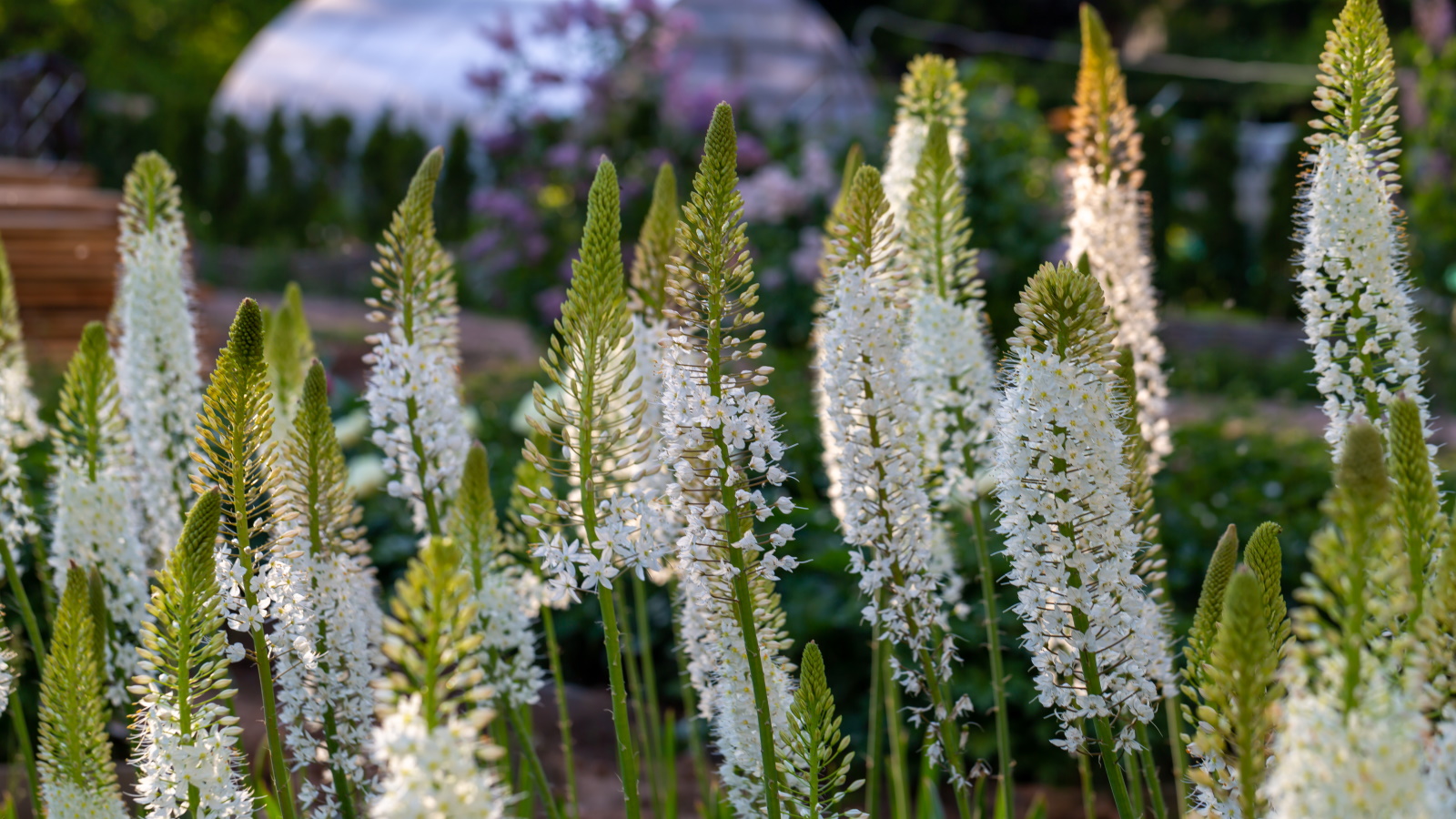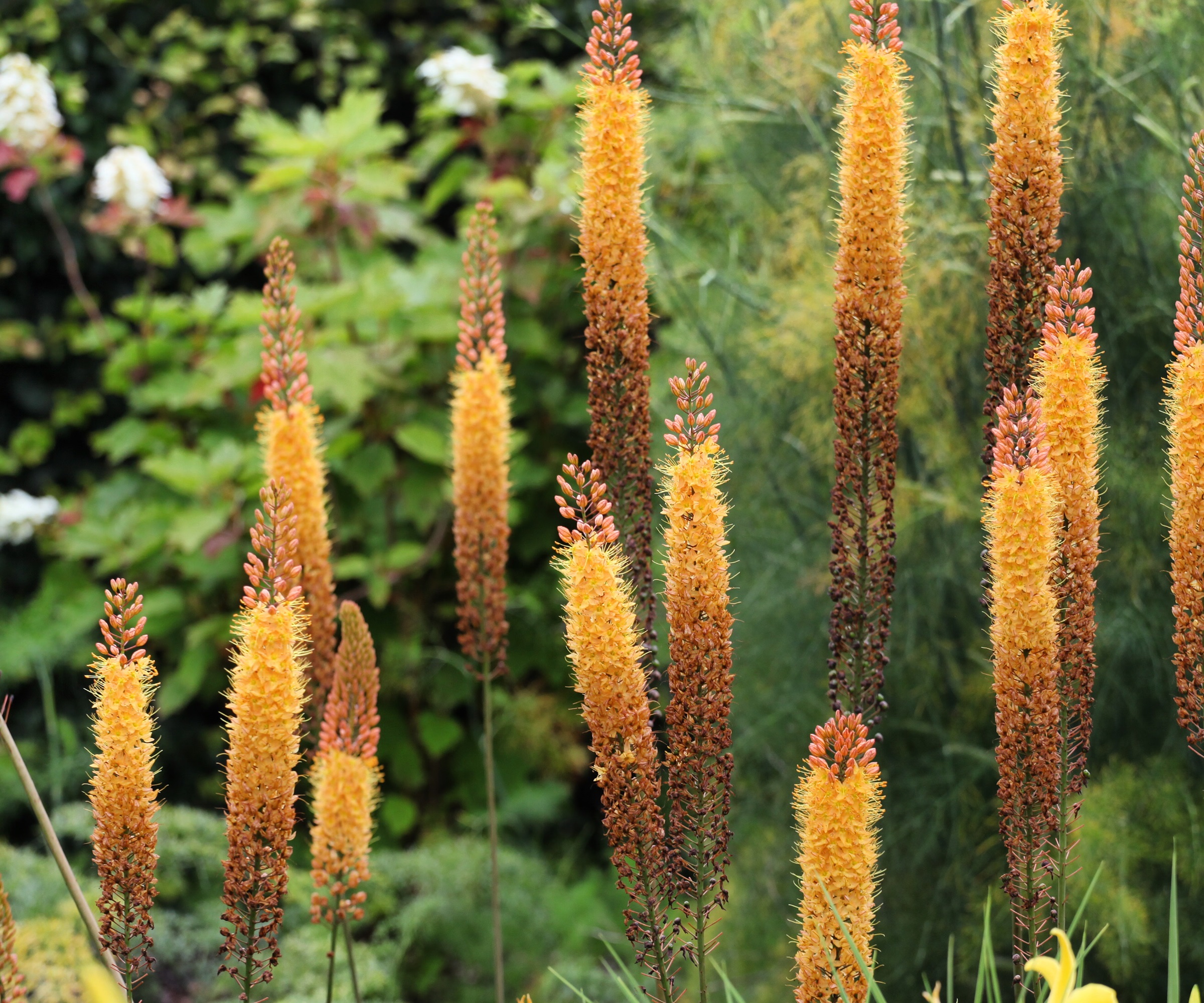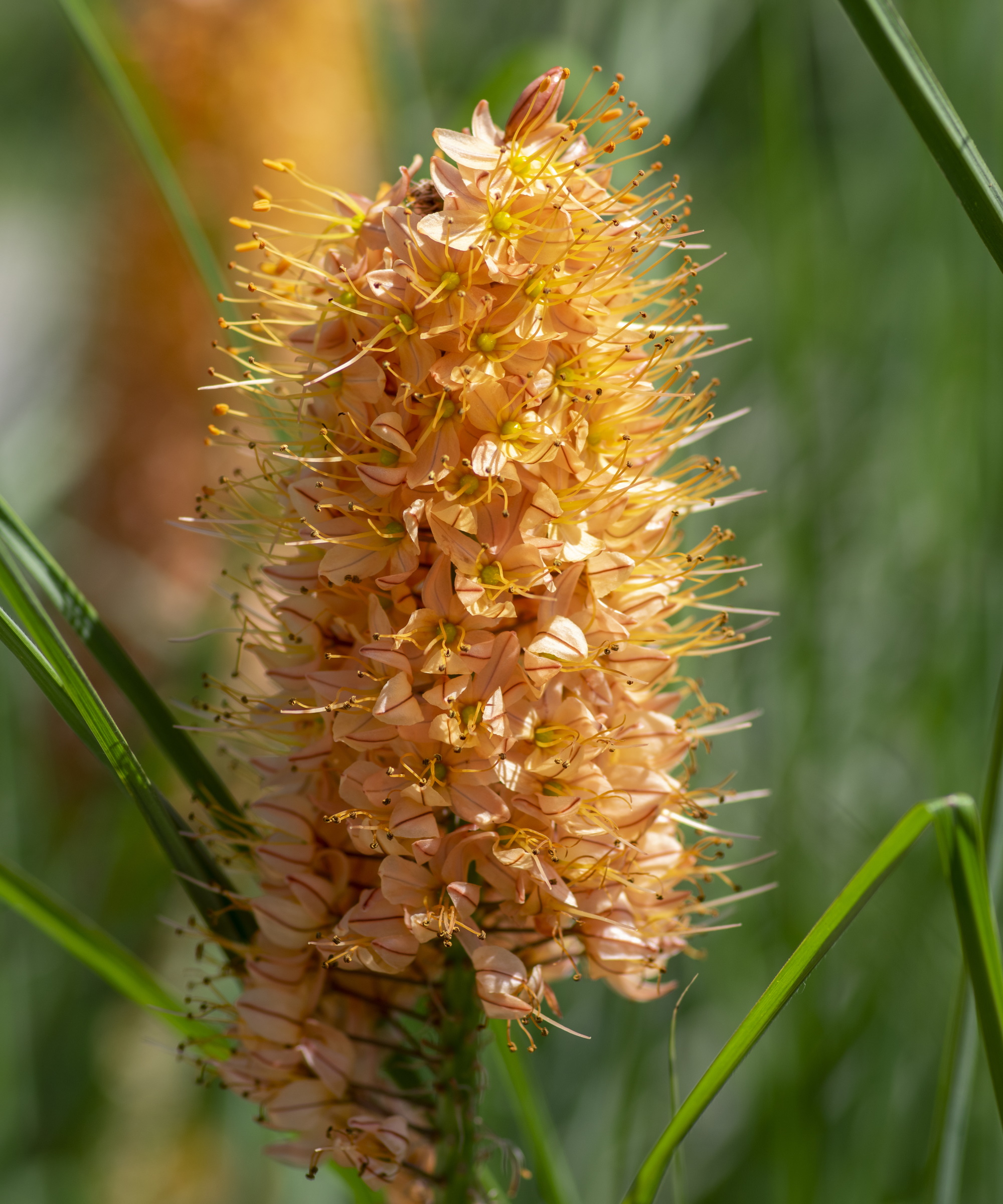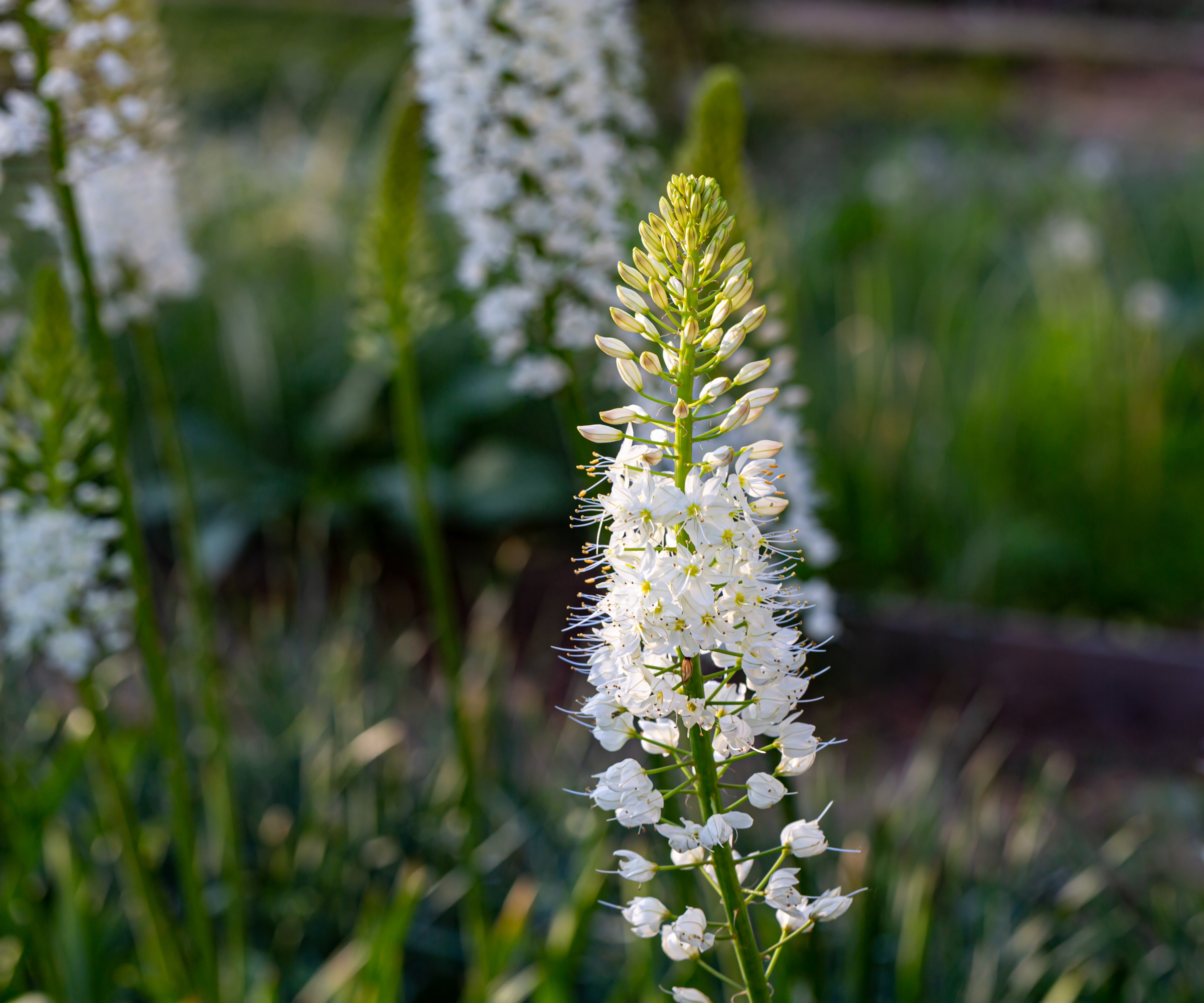
Fall is a busy time for gardeners. Even though there isn't much growing at this time of year, it's the ideal time to get your bulbs in the ground before the frosts.
If you're searching for the best perennial bulbs to plant in fall and struggling to make your final decisions, you should consider Eremurus. Also known as foxtail lilies, due to their flower spikes reminiscent of the animal's tail, it's no wonder these statement florals make the list of the best high-impact bulbs.
The good news is there's still time to plant foxtail lilies for next summer's display. Here, we've put together the ultimate guide to growing foxtail lilies so you can get planting this season.

How to grow foxtail lilies
Blooming in summer, the spikes of foxtail lilies come in a range of colors - from shades of orange to white and even pink - making them a valuable addition to a range of backyard ideas and styles. No matter which color Eremurus you opt for, there are some key things you need to know about to grow them successfully:
Facts to consider about growing foxtail lilies

Foxtail lilies thrive across US hardiness zone five to zone eight, blooming from late spring into summer.
'This is a gorgeous, perennial bulb that is, sadly, underused,' says horticulture and bulb expert Peggy Anne Montgomery. 'They make a strong architectural statement in any sunny border or rock garden.
'They look especially lovely against a dark background. Deer tend to avoid them, but pollinators love them. I can never bring myself to do it, but they are also excellent cut flowers.'
As perennials, it's important to cut foxtail lilies back after blooming to encourage returning flowers next year. When doing so, make sure to avoid pruning mistakes that can affect your foxtail lilies' ability to grow back.
'They will go dormant in summer after they bloom. When the foliage withers, it’s the best time to cut them back,' notes Peggy Anne Montgomery.
Something else that makes these bulbs attractive is how they look beneath the ground. 'The bare roots look like starfish,' says Peggy. This interesting structure makes Eremurus one of the best unusual bulbs to plant in fall.
They're incredibly low-maintenance once planted. 'Aside from pruning after blooms, correct soil and watering, always try to keep each clump solitary. Keeping them not too crowded will bring out their best growth,' advises Ian Mendoza, horticulturist and plant expert from the PlantIn app.
Foxtail lily grow guide

- Soil: 'The best soil for foxtail lilies is a mixture of organically rich but well-drained soil,' says Ian. If you're growing foxtail lilies in pots as part of a container garden, try using this potting mix for container plants from Amazon. Alternatively, make your own mixture: 'You can mix this media using sandy loam with gravel or pebbles. A great mixture would be around 60% garden soil, 10-20% coarse sand, 20-30% pebbles and 10% compost,' suggests Ian. When planting your Eremurus bulbs, plant them around four to six inches deep and at least 11 inches apart to avoid crowding. 'Plant them as soon as possible after they arrive so the rootstock doesn’t dry out. It is helpful to cover the planting area with mulch to protect roots and emerging foliage,' says Peggy.
- Watering: Once your bulbs have been planted, you need to water them well to help them settle into their new home. Going forward, avoid overwatering these bulbs. 'They require average water in the growing season. After the plants have gone dormant in summer, you may stop watering except in prolonged drought,' says Peggy. Using this moisture meter from Amazon can help identify when it's time to water your plants. When the top inch of soil is dry, it's time to top up the water levels of your foxtail lilies.
- Light: Of course, it's also important to get the position of your foxtail lilies right if you want them to put on an impressive display in summer. 'Foxtail lilies thrive best under full sun. Total exposure will help them produce more blooms that can reach really high, up to around nine feet,' Ian explains. Eremurus can be a bulb for partial shade, but it won't bloom as well as it does in full sun. 'Sites protected from wind are preferable, and in areas prone to late frosts, it’s a good idea to cover them with an upturned clay pot for extra protection,' Peggy adds.
- Pruning: As previously mentioned, the flowers of foxtail lilies will fade at the end of summer. This is when you need to deadhead them, preparing them for the coldest season and encouraging the plant to focus energy on growing blooms for next year. 'Cut them near the ground to allow them to develop new foliage,' advises Ian. 'If you retain the flowers, they can self-seed and dry out. Then, you can cut them and harvest the seeds,' he suggests. Allowing foxtail lilies to go to seed can be beneficial if you want to collect seeds to plant elsewhere, or allow these beautiful plants to self-seed and spring up in other places in your yard. When cutting back your Eremurus, make sure to use essential pruning tools to make clean cuts, like these Fiskars bypass pruning shears from Amazon.
Plant these bulbs for golden-orange spikes of beautiful flowers that bloom from late-spring into summer
FAQs
Do you need to fertilize foxtail lilies?
Foxtail lilies can benefit from being fertilized in spring, just as their active growth season begins. It's best to use a plant food with a high potassium plant fertilizer number, supporting the overall healthy growth of foxtail lilies. This high potassium fertilizer from Amazon is a good choice.
Do foxtail lilies need staking?
It can be beneficial to stake foxtail lilies if they are struggling to support themselves. You'll know if your plant needs staking because they will start to flop over, rather than stand up straight. Due to the height foxtail lilies reach, this can happen. It can also be wise to stake your foxtail lilies if they are in an exposed position where wind may knock them.
There's no doubt that planting foxtail lilies as part of your summer display will add impact. Try adding perennials to pair together to enhance your display further. Don't forget to add this to your fall gardening checklist and get planting before the first frost.







